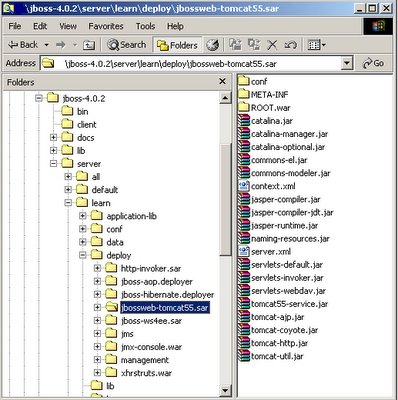With default configurations, JBoss listens on port 8080 for web connections. But this can be changed easily as this port is defined in an configuration xml file.
This is how port 8080 is changed on JBoss 4.
1. Goto the deploy folder of the server instance you use.
2. Goto the jbossweb-tomcat55.sar inside that deploy folder.
3. Find the file named server.xml inside that folder. (tomcat service file).

Look for the HTTP Connector section inside the server.xml where 8080 configuration is available. Change the port value to what ever the required port number.
This change wiill be available when JBoss is restarted.
This is how port 8080 is changed on JBoss 4.
1. Goto the deploy folder of the server instance you use.
2. Goto the jbossweb-tomcat55.sar inside that deploy folder.
3. Find the file named server.xml inside that folder. (tomcat service file).

Look for the HTTP Connector section inside the server.xml where 8080 configuration is available. Change the port value to what ever the required port number.
This change wiill be available when JBoss is restarted.




